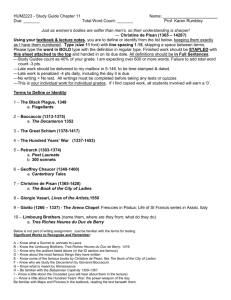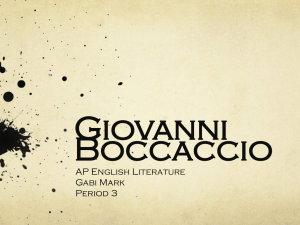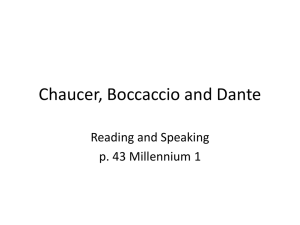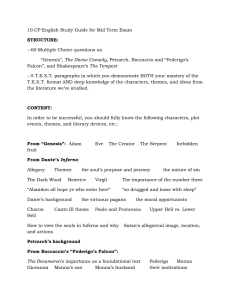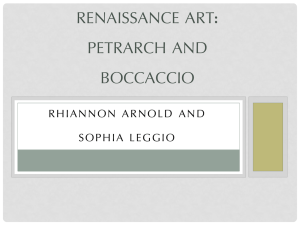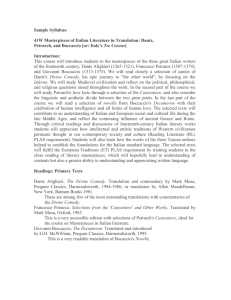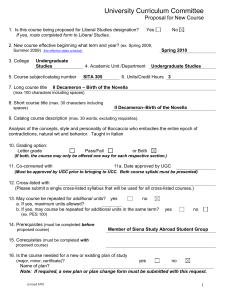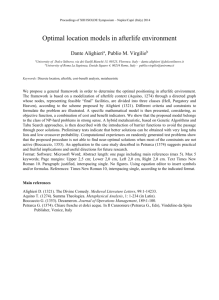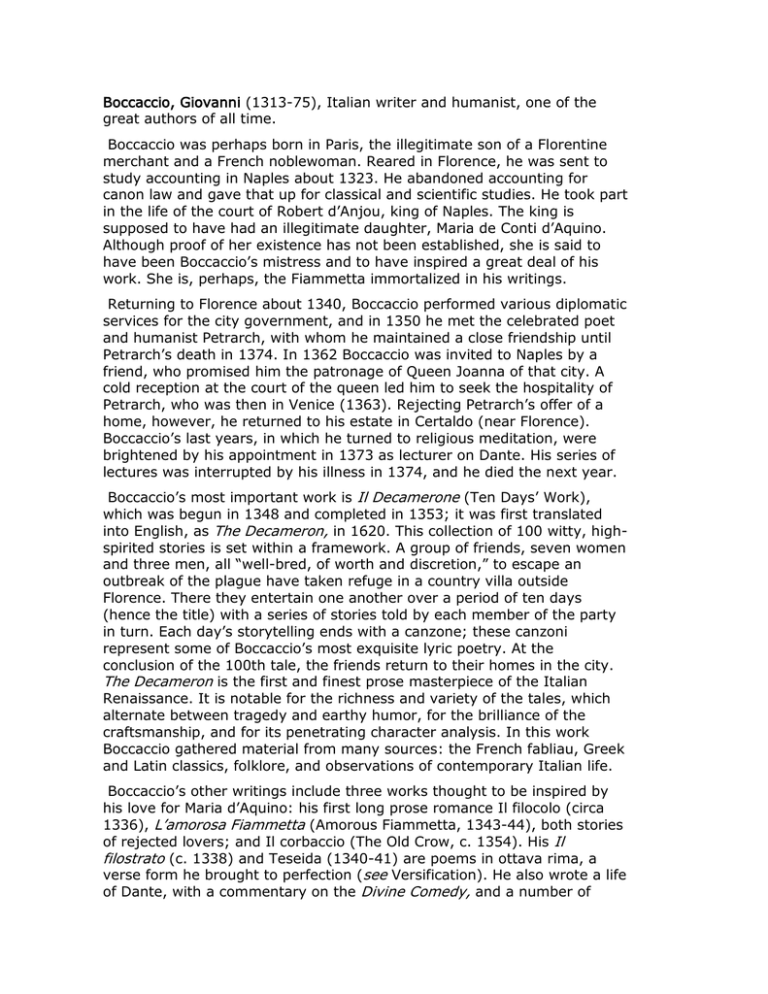
Boccaccio, Giovanni (1313-75), Italian writer and humanist, one of the
great authors of all time.
Boccaccio was perhaps born in Paris, the illegitimate son of a Florentine
merchant and a French noblewoman. Reared in Florence, he was sent to
study accounting in Naples about 1323. He abandoned accounting for
canon law and gave that up for classical and scientific studies. He took part
in the life of the court of Robert d’Anjou, king of Naples. The king is
supposed to have had an illegitimate daughter, Maria de Conti d’Aquino.
Although proof of her existence has not been established, she is said to
have been Boccaccio’s mistress and to have inspired a great deal of his
work. She is, perhaps, the Fiammetta immortalized in his writings.
Returning to Florence about 1340, Boccaccio performed various diplomatic
services for the city government, and in 1350 he met the celebrated poet
and humanist Petrarch, with whom he maintained a close friendship until
Petrarch’s death in 1374. In 1362 Boccaccio was invited to Naples by a
friend, who promised him the patronage of Queen Joanna of that city. A
cold reception at the court of the queen led him to seek the hospitality of
Petrarch, who was then in Venice (1363). Rejecting Petrarch’s offer of a
home, however, he returned to his estate in Certaldo (near Florence).
Boccaccio’s last years, in which he turned to religious meditation, were
brightened by his appointment in 1373 as lecturer on Dante. His series of
lectures was interrupted by his illness in 1374, and he died the next year.
Boccaccio’s most important work is Il Decamerone (Ten Days’ Work),
which was begun in 1348 and completed in 1353; it was first translated
into English, as The Decameron, in 1620. This collection of 100 witty, highspirited stories is set within a framework. A group of friends, seven women
and three men, all “well-bred, of worth and discretion,” to escape an
outbreak of the plague have taken refuge in a country villa outside
Florence. There they entertain one another over a period of ten days
(hence the title) with a series of stories told by each member of the party
in turn. Each day’s storytelling ends with a canzone; these canzoni
represent some of Boccaccio’s most exquisite lyric poetry. At the
conclusion of the 100th tale, the friends return to their homes in the city.
The Decameron is the first and finest prose masterpiece of the Italian
Renaissance. It is notable for the richness and variety of the tales, which
alternate between tragedy and earthy humor, for the brilliance of the
craftsmanship, and for its penetrating character analysis. In this work
Boccaccio gathered material from many sources: the French fabliau, Greek
and Latin classics, folklore, and observations of contemporary Italian life.
Boccaccio’s other writings include three works thought to be inspired by
his love for Maria d’Aquino: his first long prose romance Il filocolo (circa
1336), L’amorosa Fiammetta (Amorous Fiammetta, 1343-44), both stories
of rejected lovers; and Il corbaccio (The Old Crow, c. 1354). His Il
filostrato (c. 1338) and Teseida (1340-41) are poems in ottava rima, a
verse form he brought to perfection (see Versification). He also wrote a life
of Dante, with a commentary on the Divine Comedy, and a number of
scholarly, scientific, and poetic works in Latin, including De Claris
Mulieribus (Concerning Famous Women, 1360-74). Among illustrious
English writers who were influenced by Boccaccio’s works and used them
as source material are Geoffrey Chaucer, Shakespeare, and John Dryden.
The structure of Chaucer’s Canterbury Tales, for example, which also
employs the frame story device, is modeled after that of The Decameron.1
1"Boccaccio, Giovanni."Microsoft® Encarta® Encyclopedia 2001. © 1993-2000 Microsoft
Corporation. All rights reserved.


